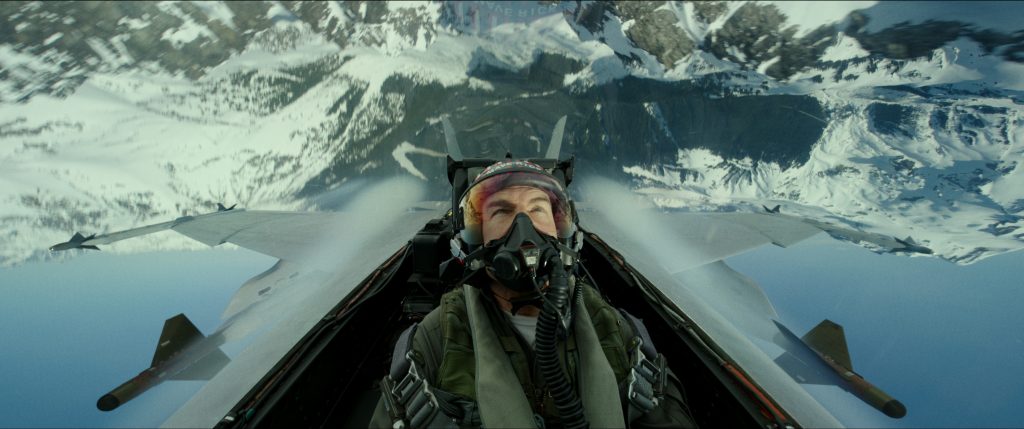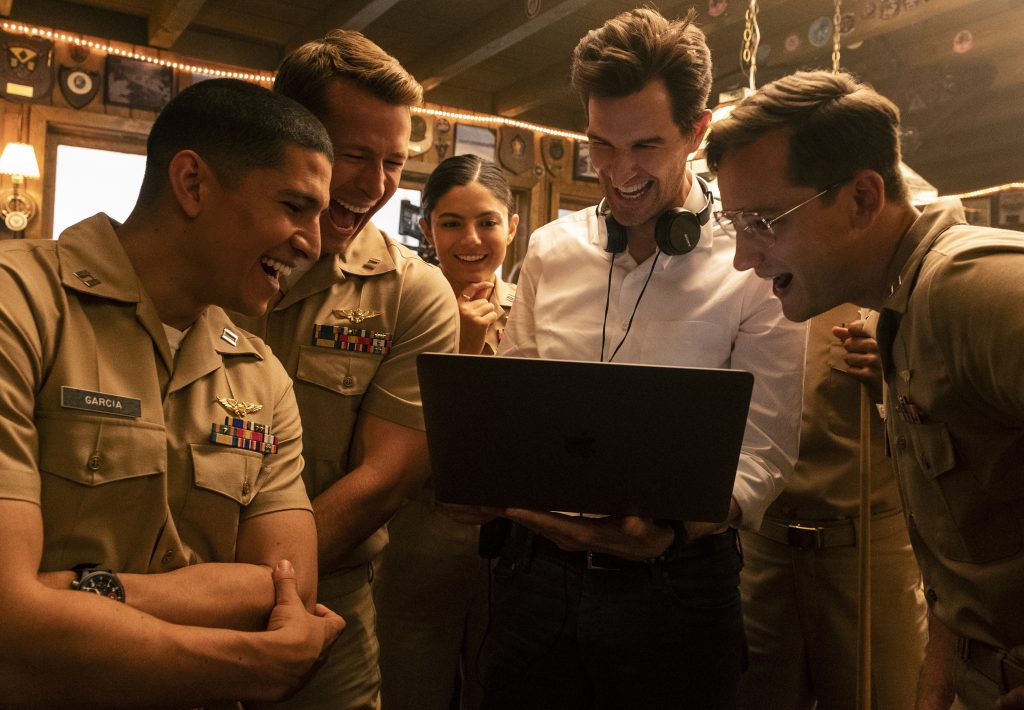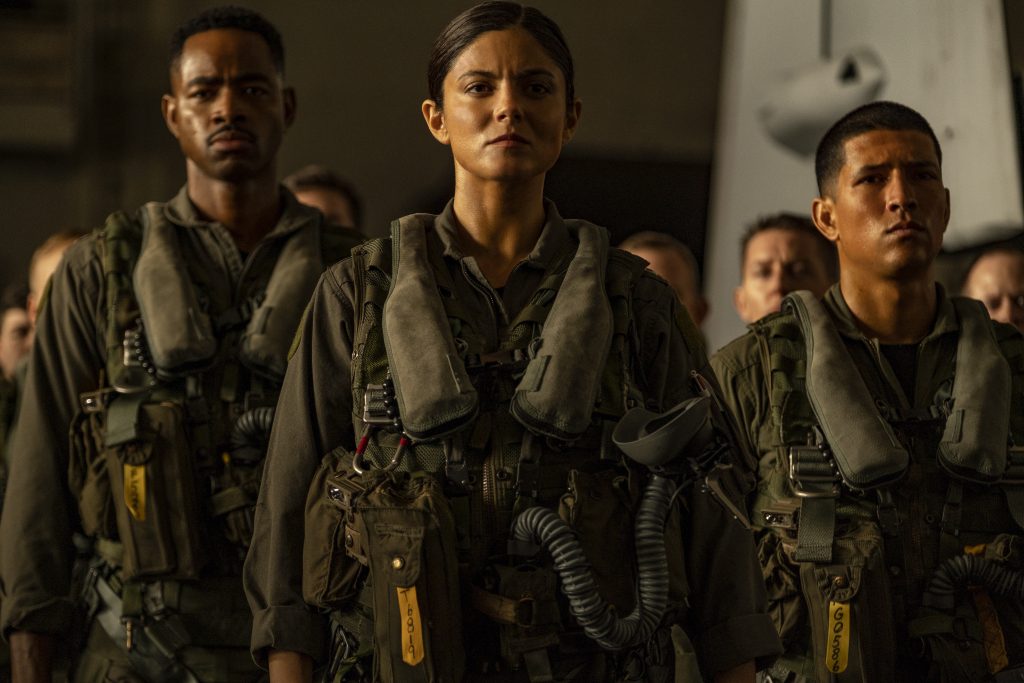Top Gun: Maverick, the undisputed box office champion of 2022, reignited movie theatres in a way few believed was possible anymore. Editor Eddie Hamilton sifted through hundreds of hours of footage to find the best shots and likened working on the project to climbing a mountain.
“The quality control bar is set so high when you’re working with Tom Cruise,” explains Eddie Hamilton. “Failure was not an option and this movie had to be a 10 out of 10.”
Top Gun: Maverick finds Tom Cruise’s Maverick going head-to-head with a group of under-prepared elite pilots as they prepare for a sudden perilous mission. Production on the film broke new ground with never-before-captured aerial cinematography and stunning flight sequences, resulting in a rare sequel that manages to pay homage to its predecessor. With hundreds of hours of footage, the editing process required taking small sections of the dailies and finding a cohesive narrative.
“The Top Gun pilots and the naval advisors were doing two flights in the morning, two flights in the afternoon, sometimes three flights in a day, and the footage was examined as soon as the pilots landed,” recalls Hamilton. “You’re getting only tiny little pieces of action each time, maybe 10 or 12 seconds of stuff that will be in the movie. You’re just chipping away at it slowly.”
Hamilton joined the call from South Africa, where he is working on Mission: Impossible – Dead Reckoning Part 1 and 2, and spoke to Awards Focus about the advice he gave actors for their cockpit scenes, dreaming of close-ups of the pilots and the guiding principles that helped him stay grounded during the editing process.

Awards Focus: You had something like 811 hours of footage on this film. I’ve seen people liken that to The Lord of the Rings trilogy. As someone who actually went through the footage, what analogy would you yourself use?
Eddie Hamilton: Oh, boy. It’s a lot of footage. It’s like four million and a half feet of film. It was a very, very overwhelming project at times. It’s like climbing a mountain. You just have to start putting one foot in front of the other and not really care about how far you’ve come or how far you have to go.
You must stay calm and eat the elephant one bite at a time. That’s what we kept telling ourselves. When you’re making these gigantic movies, you’re filming a lot of footage, of which only ten seconds is going to be used, but you have to pick the right ten seconds.
AF: Talk about the guiding principle that helped you go through all that material on a movie like this and keep it grounded.
Hamilton: The thing about this film that’s super important is that you are welcomed into the world of Top Gun in the first couple of minutes with that montage, and then you’re just on a smooth emotional journey from beginning to end, where you are just leaning in the whole time. For like 95% of the film, you’re subjectively in Maverick’s POV. You’re going on a journey with him.
Tom really understands the character of Maverick, and he knew how he wanted the audience to feel from beginning to end. Also, for anything that didn’t work, we would go back and reshoot additional lines of dialogue and angles to introduce characters to make sure it worked.
AF: Did the actors throw jokes in for you, little pick-me-ups? You’re looking at hours and hours of footage to find two or three seconds. Was there something that they threw in that made you laugh?
Hamilton: There’s a lot of that. Everyone was very serious, to be fair, but quite often, I would see them turning green in the cockpit, and then they would reach forward to turn off the cameras because they didn’t want to be filmed vomiting. Then I see the time code tick up about three minutes, and the camera would be back on again.
I remember Glen Powell once got the pilot to invert, so he was upside down, and the vomit was hanging upwards in the cockpit. Then towards the end, they all started playing air instruments. Miles Teller was doing air drums. Glen Powell was doing air guitar. Someone was doing air flute. They would get the pilots to do aerobatics while they were playing imaginary musical instruments. We edited together a little montage of them all playing different instruments in the back of a cockpit on their way back.

AF: Due to the amount of footage, you brought on editors to help you including Chris Levinson, an editor on the original film. As you talked to him about working with Tony Scott, was there a story that perhaps stood out to you?
Hamilton: Chris was an editor on Tony Scott’s Days of Thunder, and he was saying how they kept seeing posters up around Los Angeles saying the film is coming out in eight weeks and then in four weeks, and all the while, they were still editing the movie on film, and that was terrifying.
They didn’t have the luxury to slow down, which is what happened with us with Covid. We got about four-five more months of time. The film worked so well because we were really given the time not to rush. We were able to get it as good as we possibly could. We just wanted it to be brilliant and not let the audience down.
AF: Cinematographer Claudio Miranda got into the cockpit for this movie. Did you go up in those planes?
Hamilton: No, I’m quite happy just sitting in a trailer editing on a computer and watching everyone else do the flying and the aerobatics. I get a little bit airsick, probably.
It’s so all-consuming when you’re editing a film like this. You don’t really have any bandwidth to do anything else. It’s kind of unhealthy in a way because I was literally waking up at 4:00 o’clock in the morning, dreaming of close-ups of Hangman, Phoenix, Coyote, and Rooster. I just had all these images of these pilots swimming around my head because I had so much to do and get through.
AF: Could you give me an example of a scene or a sequence that was adjusted based on you watching the dailies and giving feedback?
Hamilton: When they started flying in the F/A-18 planes, they flew very straight, fast, and level. The actors were concentrating, and they weren’t really doing very much. Our cameras were locked down in the cockpit. If you watch the original Top Gun, they could move the cameras around the cockpit because they were using rear projection, yet we were in the air, and there wasn’t much visual energy in the shots.
So, we encouraged the pilots to always keep the horizon moving. I would encourage the actors to slightly exaggerate their head movements so that there was a lot more activity and visual energy in the shots.

AF: Now looking back, what stands out most to you about the Top Gun: Maverick experience?
Hamilton: I think, honestly working with Jerry Bruckheimer was amazing. Going to work at Skywalker Ranch, where we did the sound, which was amazing for me personally. I got to go to the Lucasfilm archives, which is very rare, and spend time on US naval bases, I got to have a tour of an F-35 hangar. The technology is astonishing. The helmets that the F-35 pilots wear are custom-built for each pilot, they’re half a million dollars each.
Also, being able to collaborate so closely with the cast, which you never really do as an editor, I became really good friends with all of them because we were going through everything.


